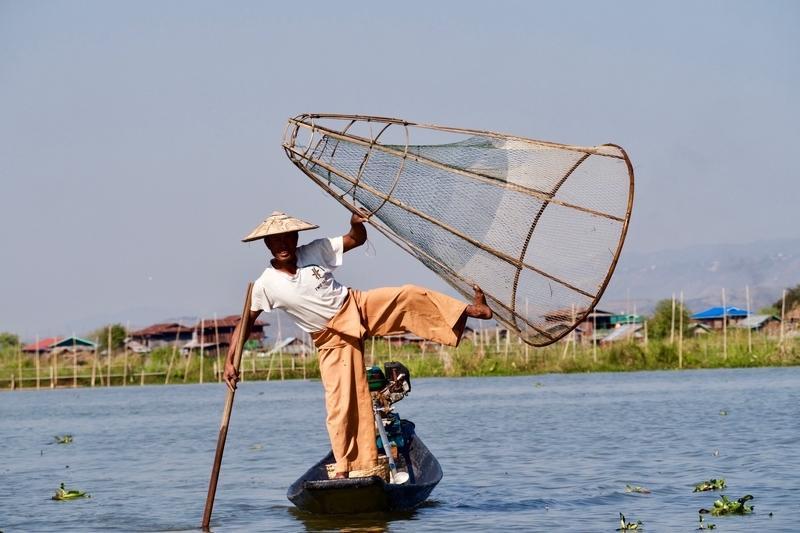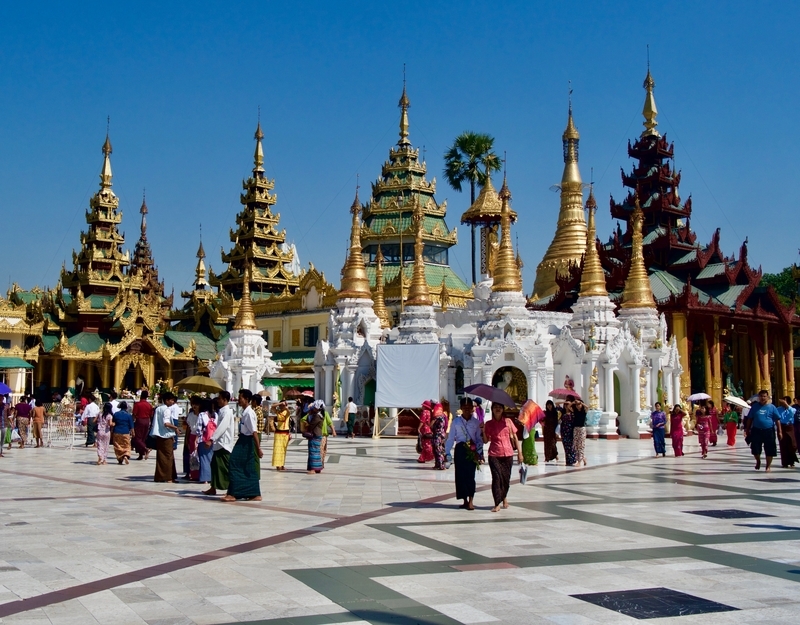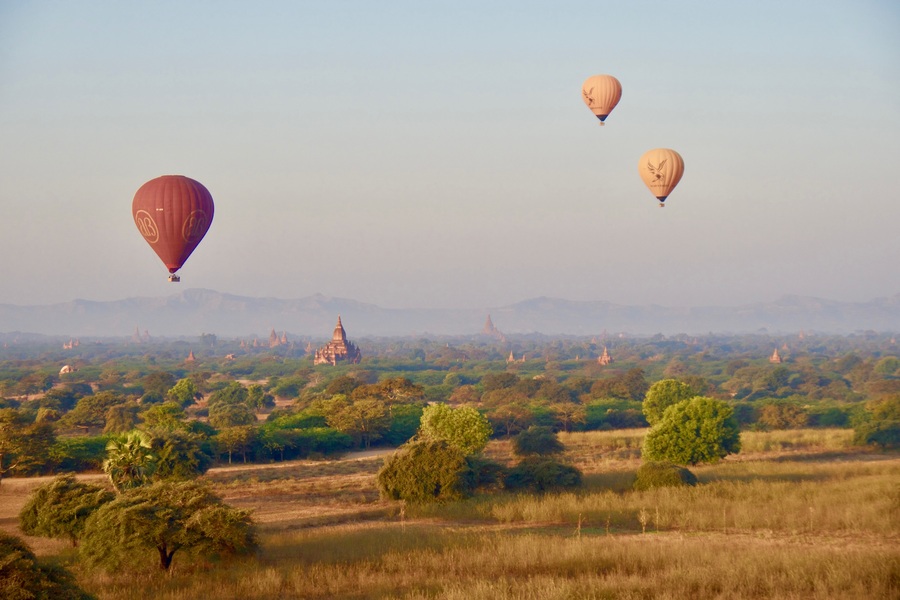
Visiting the Bagan Pagodas in Myanmar
Bagan’s pagoda-studded landscape is a history-lover’s wonderland and a highlight of travel to Southeast Asia.
The archeological site a testament to the powerful kingdom that once presided over ancient Myanmar. Bagan’s 26 square miles seem to extend as far as the eye can see. Its towering stupas—numbering in the thousands and scattered about the Bagan plane—rise out of the dense jungle, as if piercing the sky.
Bagan isn’t exactly a household name, but it is one that should be on your radar if you’re a lover of ancient history. The archaeological is immense and awe-inspiring. It is comparable to Cambodia’s Angkor Wat and Indonesia’s Borobudur.
If you take the time to explore Bagan’s hidden treasures and revel in its sunsets, you’ll find few places in the world that can compare.
VISITING THE BAGAN TEMPLES
As we gazed upon the sea of stone spires rising above the treetops, my travel companion and I joked that we were pagoda’d out. We remarked that Myanmar would make us nonchalant about Buddhist temples in a way that Rome can make one merely shrug at the sight of a cathedral. The pagodas are simply everywhere in Bagan.
I found it difficult to believe that the structures we saw were only a fraction of those that once existed.
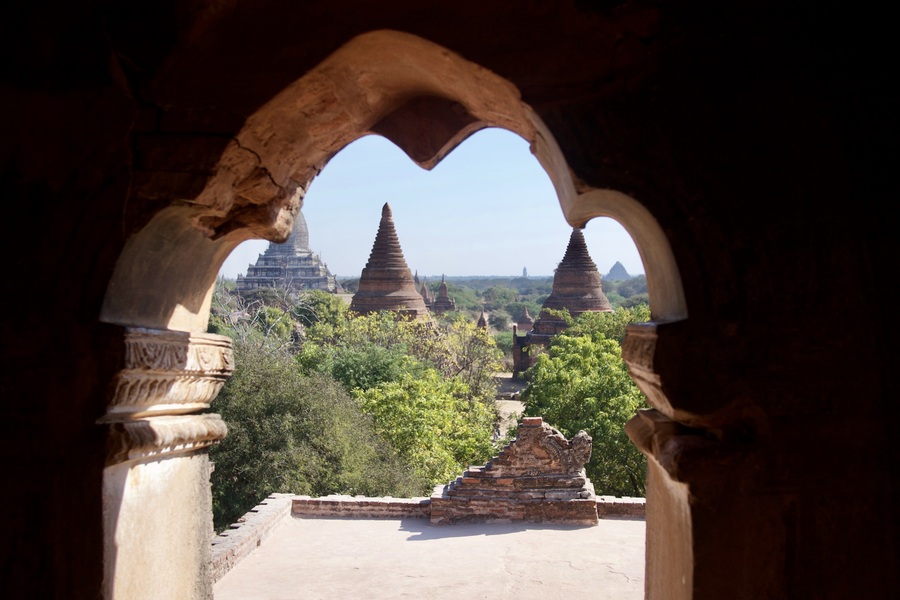
From the 9th to 13th centuries, the ancient city of Bagan was the capital of the Pagan Kingdom. During this time, over 10,000 temples and pagodas littered the Bagan plane.
But earthquakes, wars and human settlement have taken their toll on some of the structures over the years.
And today, only a quarter of those—roughly 2,000—remain.
Still, Bagan’s sprawling landscape of 2,000+ pagodas leaves room for plenty of exploration.
BEST TEMPLES TO VISIT IN BAGAN
For the sake of this blog post, I wish I could remember the name of the pagoda that we visited during our first sunrise tour. Or the names of the smaller temples that we visited in the subsequent days. I know that this post would have been far more useful if it did a better job detailing the best temples to visit in Bagan.
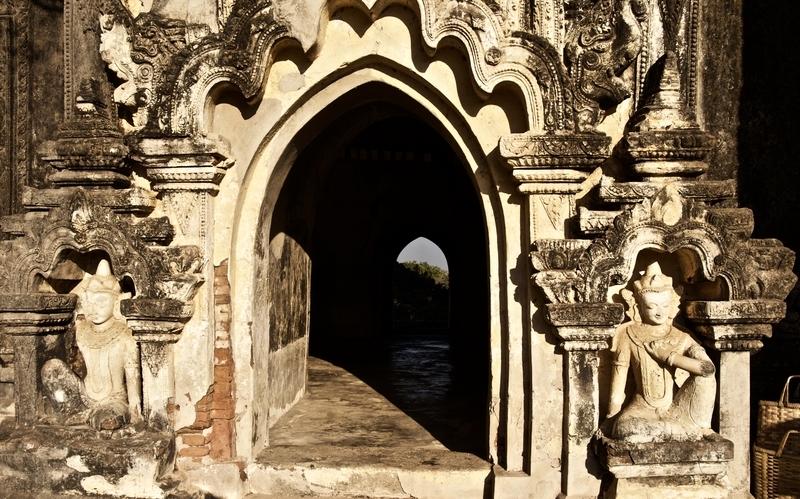
But in my defense, providing names of places to visit in Bagan is as futile as mapping out an organized itinerary for the area.
For the real joy of traveling around Bagan comes in discovering its hidden corners and solitary viewpoints.
In fact, to my surprise, my favorite temples were the ones that weren’t even marked on the map. Temples so seemingly small and insignificant that they didn’t even have names.
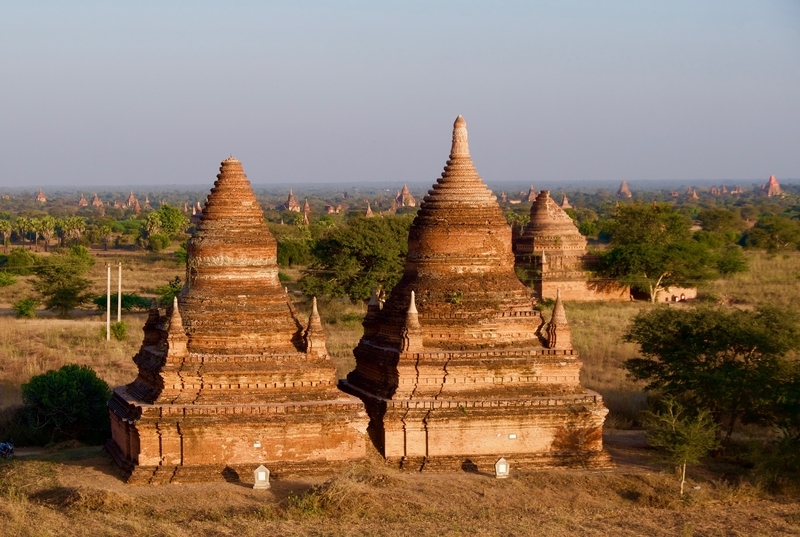
But I know that’s not why you’re reading this post. I know you probably want concrete advice on travel to Bagan.
So in order to make this post more useful, I’ve listed some of Bagan’s top pagodas and temples below. General online consensus points to the following as being particularly noteworthy.
-
SHWESANDAW PAGODA
The tallest pagoda in Bagan, Shwesandaw is a five-tiered structure with a large cylindrical stupa. Due to its height, the imposing Buddhist relic is visible from just about everywhere in Bagan.
-
DHAMMAYANGYI TEMPLE
The largest temple in Bagan, Dhammayangyi is also one of its most interesting to visit. From a distance, its multi-tiered triangular shape resembles that of the early step pyramids in Egypt.
The best-preserved of Bagan’s temples, it features detailed mortar work in its upper levels and houses statues of the Bhudda.
-
THATBYINNYU TEMPLE
One of the grandest temples in Bagan, the five story temple of Thatbyinnyu is a popular stop on Bagan itineraries. The temple was badly damaged by earthquakes in 1978 and 2016. It is currently undergoing renovations that are expected to last until 2028 or beyond.
-
ANANDA TEMPLE
The Ananda Temple is among the most impressive in Bagan. Known as the “Westminster Abbey of Burma,” its architecture boasts a fusion of Indian and Mon styles.
Four Buddha statues reside within the temple, each one facing the cardinal directions of East, North, West and South.
-
SULAMANI TEMPLE
Sulamani Temple suffered severe damage during the 1975 earthquake and was mostly rebuilt in 1994. The large temple houses interior frescoes that are worth seeing.
BAGAN PAGODA AND TEMPLE RESTORATION
In the 1990s, Myanmar’s military dictatorship sought to renovate the Bagan pagodas and temples in order to bring tourism to the region. The restoration efforts, however, drew criticism from art historians. Preservationists argued that the restorations paid little attention to the original architectural styles and materials of the area.
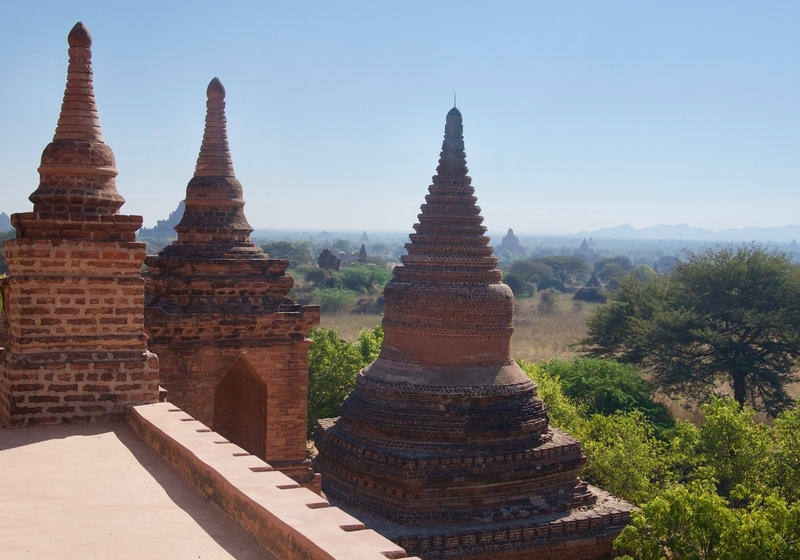
These restorations are largely why Bagan did not become a UNESCO World Heritage Site until 2019, despite its cultural, historical and architectural significance.
BAGAN SUNRISE
Witnessing a Bagan sunrise is at the top of many travelers’ bucket lists.
I watched the sunrise at Bagan during my first day in the area. It was every bit as magical as I thought it would be.
On my bike, I followed our guide through desolate streets, around sharp bends and across deep sand tracks into the heart of the Bagan Archeological Zone. The stars were still twinkling overhead and the sky was still dark when we left our hostel but, as we rode toward our destination, the inky sky began to transform.
And slowly, as the sky gave way to light shades of purple and pink, the grandeur of Bagan began to materialize before my eyes.
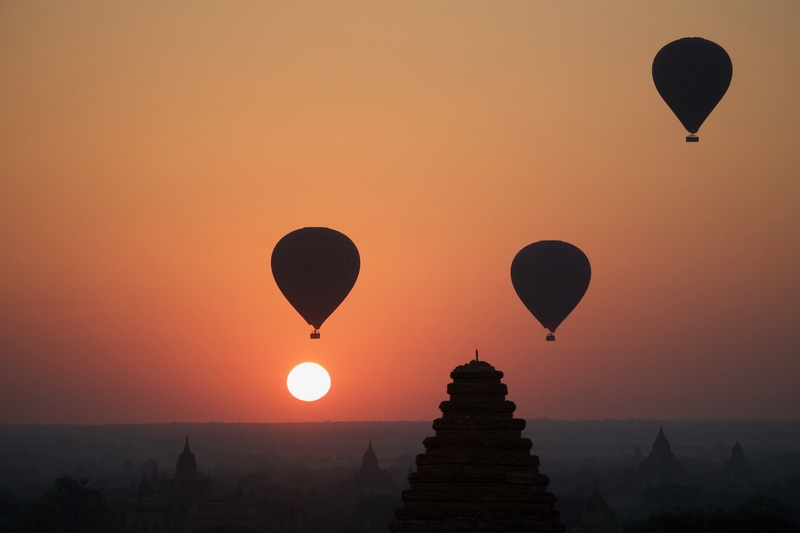
Our small group reached the first temple just prior to sunrise. As the sun peaked over the horizon, we witnessed the release of hot air balloons into the violet sky.
It was magical and mesmerizing. And well worth waking up in darkness to witness.
BAGAN SUNSET
Sunrises in Bagan are magical, but the sunsets are pretty special too. If you don’t feel like getting up at the crack of dawn to witness the sun emerge, they offer a compelling alternative.
As the sun sinks below the horizon, silhouettes of Bagan’s 2,000+ of temples stand out against the orangey-pink skies. Viewing the sunset is one of the top things to do in Bagan.
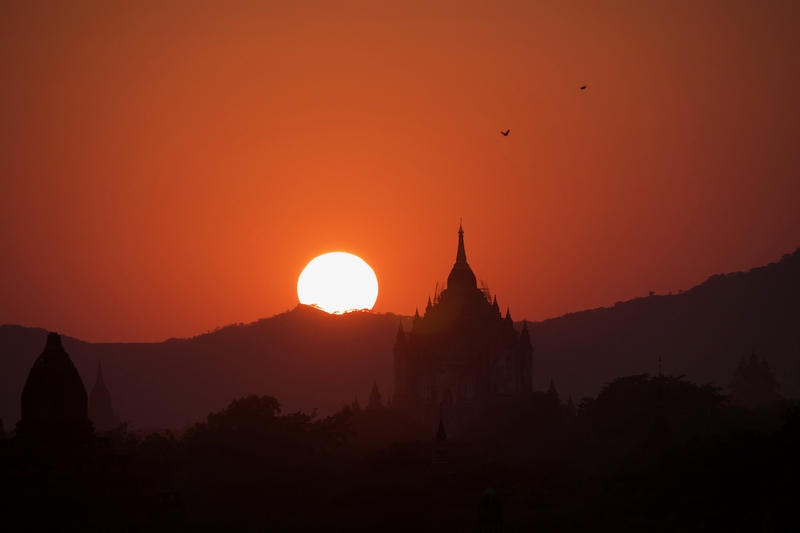
Most tourists will flock to Shwesandaw or Dhammayangyi for sunrise or sunset, but I suggest heading to one of the smaller temples in the archaeological zone instead.
In addition to enjoying your surroundings crowd-free, you’ll be able to admire the larger temples from a distance as they form a silhouette against the sky.
HOW MANY DAYS SHOULD YOU SPEND IN BAGAN?
Bagan is one of the top places to visit in Myanmar. It is the main stop along the country’s golden triangle—a triad of popular tourist destinations that include Inle Lake and the Shwedagon Pagoda in Yangon.
Since Bagan is such a large archaeological site, it takes multiple days to fully explore. My travel companion and I spent three full days in the area. We found it to be a suitable amount of time, though I could have easily enjoyed an extra day had we had a flexible schedule.
With three days, we were able to explore both the area’s touristy sites (Shwesandaw, Sulamani, Dhammayangyi) and its secret, off-the-beaten path gems. We woke up every morning before sunrise and stayed awake past sunset.
In three days, we saw more pagodas than we ever knew existed.
But I still feel as though four days would have been ideal.
GETTING TO BAGAN
My friend and I traveled to Bagan by bus, following a day in Yangon.
There are two types of bus companies that service the route between Yangon and Bagan: the VIP buses, and the regular buses.
The VIP buses cost a bit more on average, but the small increase in price is absolutely justified.
We opted out of taking the more comfortable and slightly pricier VIP bus (a decision we later regretted) and arrived in Bagan at 5am—exhausted and sleep-deprived and ready for bed.
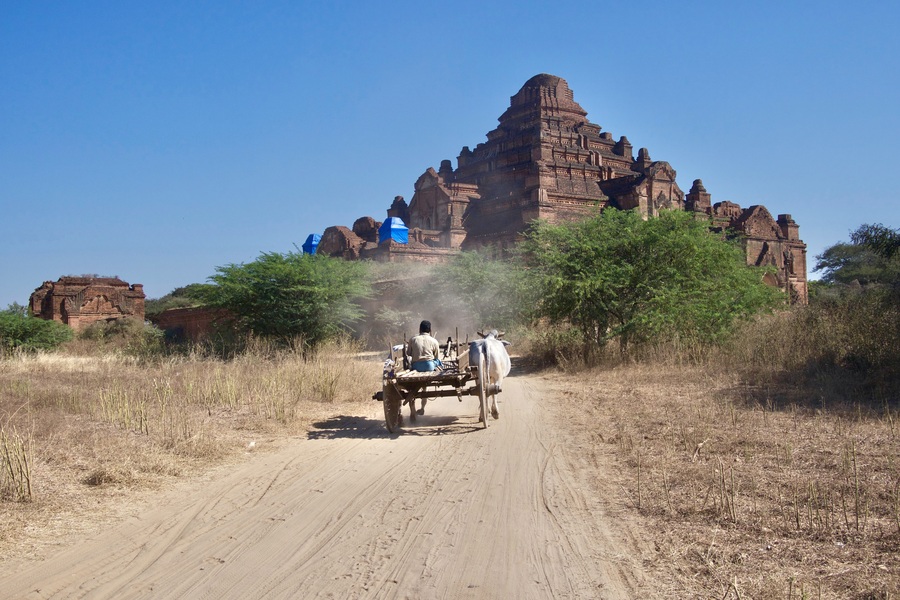
Though overnight buses are a convenient mode of transportation between Yangon and Bagan, they are by no means the only option. An overnight train also services the route, as do local airlines.
Flying is the easiest way of traveling between Bagan and Yangon. Flights cost roughly USD$100-150 and take just over an hour.
WHERE TO STAY IN BAGAN
Bagan consists of three main areas: Old Bagan, New Bagan, and Nyaung U
Old Bagan lies closest to the archaeological site’s temples and pagodas. It tends to be the most expensive option due to its proximity. It also has the best shopping and restaurant options. The luxurious Hotel @ Tharabar Gate is located in Old Bagan.
New Bagan was an area built to accommodate tourism in the area. It is where the majority of cheaper backpacker guesthouses can be found. It is farther from most of the popular Bagan temples, though the golden LakwaNandar Pagoda lies nearby.
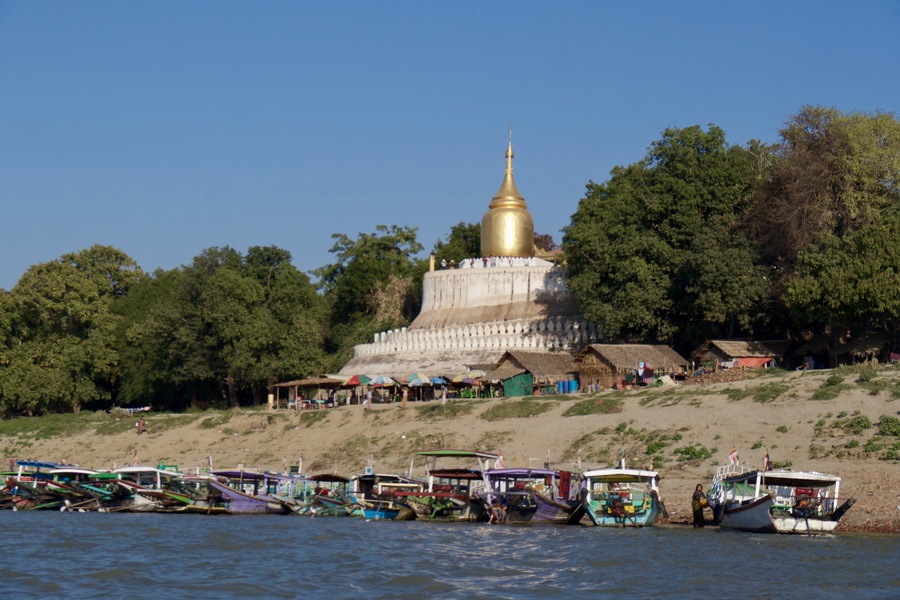
During our three days in Bagan, my friend and I chose to stay at the lovely Ostello Bello. The popular Bagan backpacker hangout proved to be a terrific choice. I’m not sure if the original Ostello Bello is still around, but its sister property, the Ostello Bello Bagan Pool in New Bagan seems to be around and has great reviews.
Nyaung U is home to the Bagan airport and bus station. A host of hotels ranging from budget to luxury can be found in the area. The Bagan Cottage Boutique Hotel and Sky View Hotel are in Nyang U.
GETTING AROUND BAGAN
You can get around Bagan by e-bike or by hiring a driver for the day.
Since foreigners are banned from renting motorbikes in much of Myanmar and since taking a conventional bicycle can be challenging due to deep sand, e-bikes have stepped in as the most efficient way of getting around Bagan.
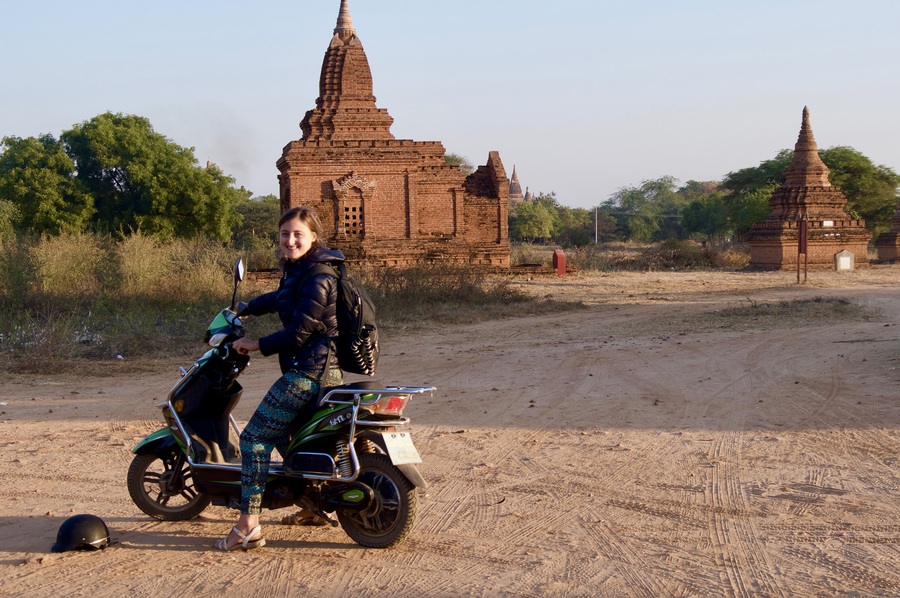
E-bike rentals are prolific in the area and cost roughly $7 per day.
While some people choose to visit Bagan’s temples by horse cart or taxi, I found e-bikes to be a hassle-free and efficient way of getting around.
BAGAN ENTRANCE FEES
Officially, the fee to enter the Bagan archeological area is 25 000 Kyats (roughly $12USD). Tickets can be purchased at the airport or at kiosks before entering the archeological zone.
BEST TIME TO VISIT BAGAN
The best time to visit Bagan is during Myanmar’s dry season, from October through March. Due to inclement weather and high winds in the off-season, the months of November to March are the only times you’ll be able to take a hot air balloon over the ruins.
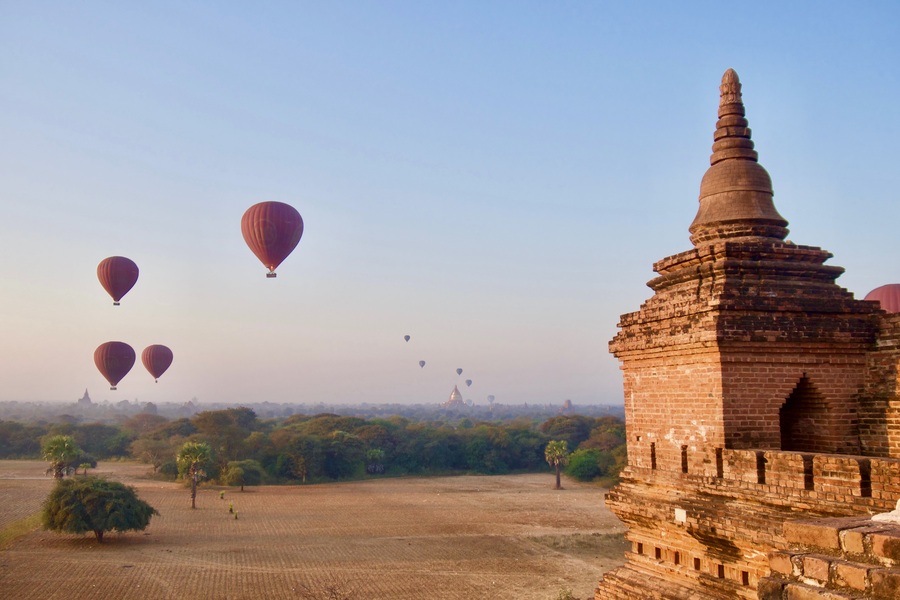
We visited in February and found the weather to be great for exploration and sightseeing.
NOTE ON SAFETY IN MYANMAR
Myanmar is home to some of the kindest people I’ve ever met in my travels. I can’t think of many places I’ve visited where the hospitality can compare.
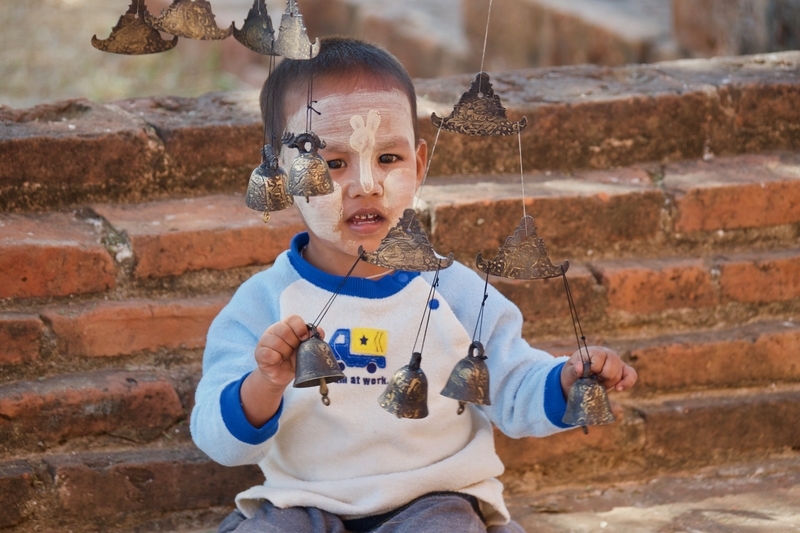
That being said, I visited the country during a period of relative peace and stability.
Today, the political landscape in Myanmar is quite different than it was a few years back. Since the military coup d’etat in February 2021, the country’s security situation has deteriorated significantly.
Though the military junta is currently issuing tourist visas, the US State Department still has the country under a Level 4: Don Not Travel advisory.
If you choose to travel to Bagan Myanmar anyway, please use caution.
****
Bagan’s beauty lies in its hidden corners and small off-the-beaten-path pagodas.
As I watched the sun rise and set behind the silhouettes of nameless structures, I realized that not having the names of particular places to see hardly mattered. Visiting Bagan isn’t about checking temples off your list. It isn’t about any particular viewpoint or pagoda or Buddhist statue.
Instead, travel to Bagan is about getting lost in the maze of one of humanity’s great achievements. It is about soaking in the ensemble cast of pagodas that, together, look more awe-inspiring than just about any single structure I have ever seen.
For when seen together, the 2,000+ stone spires that speckle the Bagan plane form one of the most evocative human-engineered landscapes on Earth.
